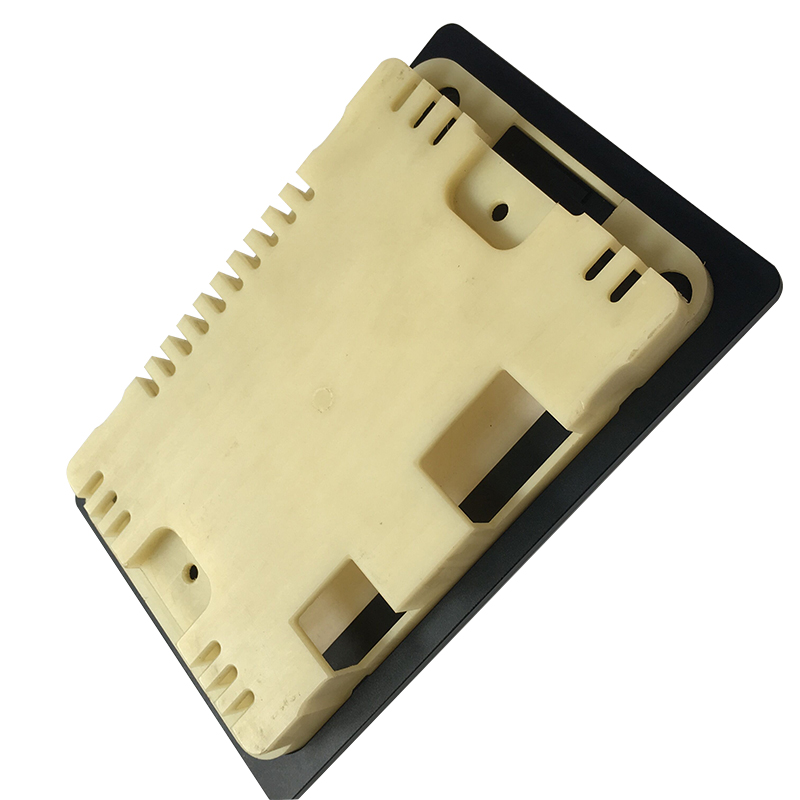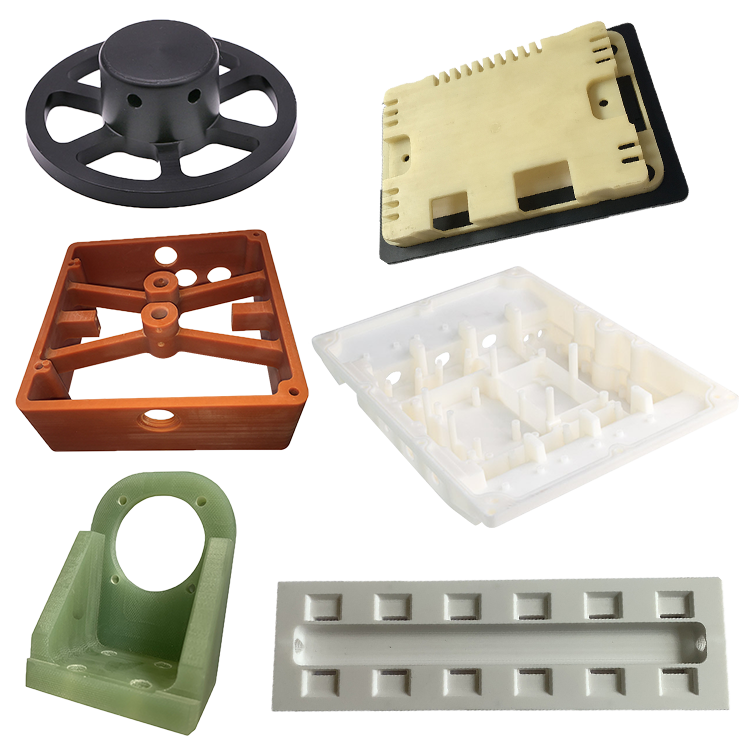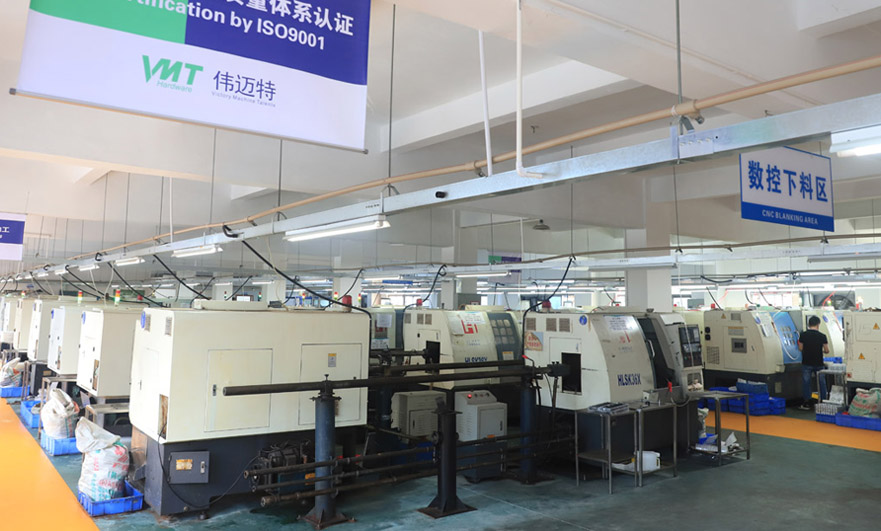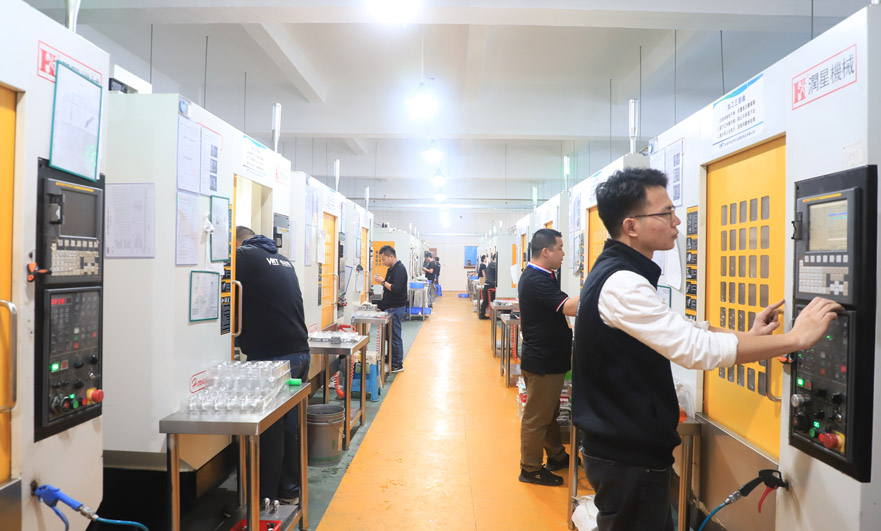What are POM?
Polyoxymethylene homopolymer (POM) is an impact and abrasion resistant semi-crystalline thermoplastic. Acetal (acetal), Polyoxymethylene (POM), Polyacetal (polyacetal), Polyformaldehyde, Saigang, these are its names, and the common ones are black and white. Despite being opaque in nature, POM is available in a variety of colors.
This material has high mechanical strength and stiffness, good sliding properties (low coefficient of friction), and excellent wear resistance. Because acetal hardly absorbs water and has excellent dimensional stability, it is an excellent choice for complex shapes and precision machined parts.
However, it is unstable and easily degraded under acidic conditions and high temperatures. Since it contains a large amount of oxygen in its molecules, it is difficult to impart flame retardancy, and its continuous operating temperature ranges from about -40°C to 120°C.
POM has two variants, acetal homopolymer POM-H and acetal copolymer POM-C, POM-H is greater than POM-C in terms of hardness and stiffness, and the melting point of POM-H (172-184°C) is higher than that of POM -C (160-175°C) is about 10°C, the density is 1.410-1.420 g/cm3, and the crystallinity is 75-85%. There are also some modified POMs with higher melting points.

Advantages and disadvantages of POM CNC machining materials:
Advantages of POM materials
Electrical characteristics
POM has excellent thermal insulation properties, coupled with its excellent mechanical strength, POM is a very suitable material for electronic components.
POM can also withstand substantial electrical stress, making it suitable for use as a high voltage insulator. Its low moisture absorption also makes it an excellent material for keeping electronic components dry.
Mechanical strength
With a tensile strength of 7000-9000 PSI, POM is also very hard, has strong toughness, and is less dense than metal. Making it suitable for lightweight parts that need to withstand high pressure.
Anti-fatigue
POM is a very durable material with excellent resistance to fatigue failure in the temperature range of –40° to 80°C. In addition, its fatigue resistance is less affected by moisture, chemicals or solvents. This characteristic makes it an ideal material for parts that need to withstand repeated impact and stress.
Impact resistance
POM can withstand instantaneous impact without failure, mainly due to its very high toughness, and specially treated POM can provide greater impact resistance.
Good dimensional stability
Dimensional stability measures a material’s ability to maintain its normal dimensions after exposure to pressure, temperature, and other conditions during CNC machining. POM does not deform during CNC machining, is well suited for machining, and can achieve precise tolerances.
Frictional properties
Moving mechanical parts are usually lubricated to reduce the friction that occurs when they rub against each other. POM CNC machining parts are inherently slippery and do not require lubrication. This feature can be used as part of machinery where external lubricators may contaminate the product, such as food processors.
Sturdiness
The high tensile strength and durability of POM make it a suitable material for high stress applications. POM is very strong and is often used as a replacement for steel and aluminum alloys.
Moisture-proof
Even under the most humid conditions, POM absorbs very little water. This means it maintains its structural integrity even in underwater applications.
Creep resistance
POM is a very tough material that can withstand a lot of stress without failing. This exceptional durability makes it the material of choice for parts in many industries.
Electrical insulation
POM is an excellent insulator. Due to this property, it is used in many electronic products.

Disadvantages of POM materials
low adhesion
Due to its chemical resistance, POM does not respond well to adhesives, making it difficult to bond.
Flammable
POM is not self-extinguishing and will burn until there is no more oxygen. Fighting a POM fire requires a Class A fire extinguisher.
Heat Sensitivity:
CNC machining of POM at high temperature can lead to deformation.
Problems easily encountered in CNC machining of POM materials
Generally, the main problems encountered are the deformation and cracking of CNC machining. There are also two common types of cracking here, one is direct cracking during CNC machining, and the other is hidden cracks (usually the cause of internal stress). CNC machining It will crack slowly after that, and it will be a headache.
Before talking about these issues, let’s talk about material selection and trial production.
Good materials can largely avoid large deformations. Therefore, in terms of material selection, please give priority to using imported POM materials (or modified POM) for CNC machining. The quality of domestic POM materials varies, and the degree of deformation is often greater and unstable between batches (impurities, some pits similar to cracks inside).
Regardless of imported or domestic POM materials, please be sure to trial-manufacture before CNC machining. If the material batches are different, it is also recommended to trial-manufacture.
Selection of CNC machining tools
Because POM has low hardness and small cutting force, general high-speed steel and cemented carbide tools are sufficient for processing, and the knife edge must be sharp to reduce cutting heat. PCD turning tools can be used optionally in CNC turning.
POM material processing (recommended must be done)
If the selected POM material is not good, or the dimensional tolerance requirements are relatively high, it is recommended to perform annealing treatment after roughing to eliminate its internal stress, which can greatly reduce the deformation after finishing.
There will be certain differences between different manufacturers or grades of POM materials. The following process parameters are for reference only:
After rough machining, it is oil bath annealed (in hot oil) or air bath annealed (in an oven). Adjust the annealing temperature, which is generally 10-20°C (about 140-150°C) lower than the heat distortion temperature of the product. For oil bath annealing, the annealing time is increased by 40-60 minutes for every 5 mm of wall thickness, for air bath annealing, the annealing time is increased for 20-30 minutes for every 5 mm of wall thickness, after completion, naturally cool to room temperature.
Another “earth method” annealing method (annealing temperature 100°C)
When the ambient temperature of CNC parts is below 80°C, boil them in boiling water for 5 to 6 hours after rough machining, and cool them down to room temperature naturally.
Sufficient time can also adopt the natural aging method.
After rough processing, it should be naturally placed at room temperature (preferably constant temperature) for about a week.

Common deformation causes and countermeasures
First of all, it is best to ensure that the workpiece blank size is standard and consistent during CNC machining, which is more conducive to grasping a relatively consistent deformation and controlling the tolerance within a relatively close range.
1. Clamping causes deformation
The POM material will be deformed when it is clamped, and it will return to its original state after it is released. At this time, you can consider changing the clamping form, the purpose is to increase the contact surface of the workpiece. For example, the bench vise cushions things, fixes them with glue, and so on. For larger plates, vacuum suction cups can be used, but the blank needs to be flat. It is recommended to fix one side with glue first and then sweep it, and then use the suction cup to fix the smoothed surface for rough machining. There is also a kind of frozen suction cup fixed in the industry. It is said that it can also be done. I haven’t tried it. Let’s see if anyone can share their experience.
2. Cutting heat causes deformation
POM material has poor heat resistance, is sensitive to heat, and is easily deformed due to insufficient cooling during processing. First of all, the tool must be sharp, so that the heat generated during cutting is relatively small. Secondly, the cutting amount can be reduced, the cutting can be divided into multiple times, and the cooling liquid can be increased. The purpose is to reduce the generation of heat as much as possible or quickly take away the heat generated during the cutting process.
3. Elastic deformation
The POM material has relatively high elasticity. During cutting, the part in contact with the tool will deform inward due to the elasticity of the material. When the tool leaves, the part that is cut and pressed will produce a certain amount of deformation. At this time, it is necessary to perform multiple tool compensation adjustments according to the actual cutting effect. Cutting in multiple cycles with a small amount of cutting during processing can reduce the dimensional deformation caused by the elasticity of the material.
4. Internal stress deformation
Since the thermal expansion coefficient of engineering plastics is larger than that of metals, when the machining allowance is large, deformation will occur due to the elimination of internal stress. First of all, it is necessary to correctly select and process materials (as mentioned above). Secondly, when the amount of material removal is relatively large, try to place as thick a material as possible, control the margin, and use symmetrical processing (whether the part design itself is reasonable or not is actually critical) to offset the stress and deformation caused by processing.
After finishing, you should also pay attention to temperature control during transfer and storage. If possible, keep the temperature to prevent deformation of parts due to temperature changes. At the same time, remember to protect the surface to avoid scratches and the like. Case.
Common Causes of Cracking
The previously mentioned degree of deformation is more prone to cracking, but this is only part of the reason. There are also the following reasons for the cracking of POM materials during operation:
1. The amount of knife eating is too large during CNC machining;
2. Directly use a larger drill bit to drill holes, and the cutting force is too large to squeeze and crack;
3. When CNC machining deep holes, the drill bit is not repeatedly retracted to remove chips, the chips are not discharged sufficiently, and extrusion cracks;
4. Insufficient cooling, insufficient cooling of the drilling hole, resulting in high cutting heat and cutting force and cracking;
5. If the feed speed is too fast, the stress inside the POM bar will crack;
6. When drilling, the cutting edge of the drill bit is worn and the drill bit is not repaired in time, and the hard drill leads to cracking.
Selection of CNC machining methods
CNC turning
Cooling is required during CNC machining to reduce wear and conduct heat to prevent melting. It is recommended to use compressed air cooling or solid lubrication first, followed by coolant. The rotating speed should not be too fast, and the amount of feed and engagement should not be too large. The rake angle and rear angle of the tool can be slightly larger, and the cutting edge must be sharp. Commonly used high-speed steel turning tools have a rake angle of about 25°~40° and a rear angle of about 10°~20°, and the clamping force of the chuck should be as small as possible.

Drilling
Do not directly drill with a large drill bit, it is recommended to drill a small hole first and then ream at a low speed. The drill bit must be kept sharp, and the following drill bits can be used for reference: apex angle 60°~90°, helix angle 10°~20°, rake angle 0°, back angle 10°~15°. When drilling, the force in the feed direction should not be too large, and the tool should be retracted in time (generally 5~6mm deep) for chip removal and cooling. For drilling through holes, the feed rate should be reduced when drilling fast, so that the drill bit does not push the material away in the axial direction.
CNC milling and threading
Except for the different tools, they are generally the same, that is, the clamping should avoid deformation, keep the tool sharp, the feed rate should be small, and the cooling should be sufficient.

Planing
This kind of processing is relatively rare, and POM materials, whether they are plates or bars, are relatively flat. It is not advisable to use flat knives when planing the plane, and sharp knives should be used for processing, and the back angle of the knives should be small, otherwise it is easy to crack or fall off.

The above is the knowledge and problems encountered in CNC machining POM plastic materials, I hope it will be helpful to you.